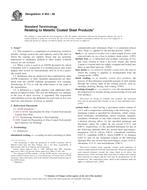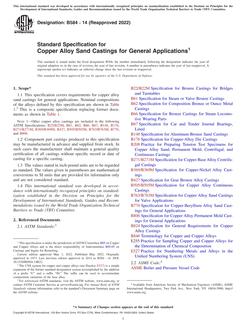1.1 This test method provides for sampling a large volume of atmosphere, 1600 to 2400 m (55 000 to 85 000 ft ), by means of a high flow-rate vacuum pump at a rate of 1.13 to
1.70 m /min (40 to 60 ft /min) (1, 2, 3 and 4).
1.2 This flow rate allows suspended particles having diameters of less than 100 [mu]m (stokes equivalent diameter) to be collected. However, the collection efficiencies for particles larger than 20 [mu]m decreases with increasing particle size and it varies widely with the angle of the wind with respect to the roof ridge of the sampler shelter and with increasing speed (5). When glass fiber filters are used, particles within the size range of 100 to 0.1 [mu]m diameters or less are ordinarily collected.
1.3 The upper limit of mass loading will be determined by plugging of the filter medium with sample material, which causes a significant decrease in flow rate (see 6.4). For very dusty atmospheres, shorter sampling periods will be necessary. The minimum amount of particulate matter detectable by this method is 3 mg (95% confidence level). When the sampler is operated at an average flow rate of 1.70 m /min (60 ft /min) for 24 h, this is equivalent to 1 to 2 [mu]g/m (3).
1.4 The sample that is collected may be subjected to further analyses by a variety of methods for specific constituents.
1.5 Values stated in SI units shall be regarded as the standard. Inch-pound units are shown for information only.
1.6 This standard does not purport to address all of the safety concerns, if any, associated with its use. It is the responsibility of the user of this standard to establish appropriate safety and health practices and determine the applicability of regulatory limitations prior to use.
Product Details
- Published:
- 12/10/1997
- Number of Pages:
- 8
- File Size:
- 1 file , 120 KB


